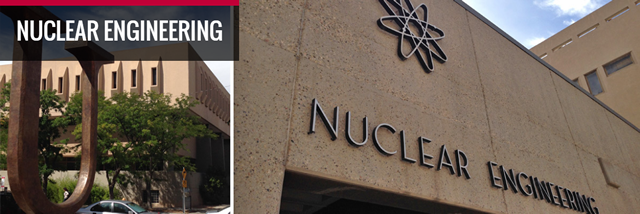
Nuclear Engineering ETDs
Publication Date
Summer 7-9-1973
Abstract
Within the past several years, an increasing effort has been concentrated on the application of high-current, relativistic electron beams to the problem of controlled thermonuclear fusion. Initially, this effort had been impeded by limitations in the high-voltage and pulsed-power technology required to develop pulsed, high-power electron accelerators. These technologies have been developed to a level where powers on the order of 1013 watts are now available for time durations of approximately 100 nanoseconds. With the initial limitations removed, the emphasis has more recently been centered on controlling and concentrating these beams to achieve the parameters necessary for fusion experimentation. In this regard, the initial behavior of the beam within the diode region of the accelerator becomes an extremely critical element. Unfortunately, a comprehensive and self-consistent description of the operative phenomena which determine the electron flow within such a diode has not been available.
In an attempt to provide such a description, that class of high-current, cold-cathode diode distinguished by non-self-convergent electron flow has been studied to (1) define the operative electron emission mechanisms, (2) to determine the dominant plasma phenomena within the interelectrode volume, (3) to classify the modes of electron flow, and (4) to verify the Friedlander beam convergence criterion. A basis for unfolding these elements of observed diode behavior was developed from a detailed analysis of the time dependent, voltage-current characteristics of the diode. Since the electron flow throughout the predominant portion of the accelerating pulse was space-charge limited, separation of the interrelated diode phenomena was facilitated by representing the voltage current data in terms of the diode perveance. To confirm certain of the assumptions fundamental to the interpretation of the perveance data, streak photography of plasma luminosity motion within the diode was combined with measurements of the time-integrated as well as time-dependent current density distribution at the anode plane. When correlated with the theory of high-voltage vacuum breakdown formulated by Dyke, Charbonnier, Mesyats, and others, the results of this diode study provide a complete and self-consistent description of the dominant processes acting within a high-current, cold-cathode diode.
Within this model, six distinct phases of diode response can be identified. If a high-current, relativistic electron accelerator is to generate the high-power electron beam for which it was designed, the diode must evolve through at least the first four of the six phases. In sequential order, these phases are as follows:
1. Stable field emission from microscopic, whisker-like cathode projections
2. Transition to cathode-initiated vacuum breakdown
3. Whisker explosion and the formation of a cathode plasma sheath
4. Space-charge-limited emission from the expanding plasma sheath
5. Transition to self-convergent flow
6. Development of a highly convergent electron flow
Document Type
Dissertation
Degree Name
Nuclear Engineering
Level of Degree
Doctoral
Department Name
Nuclear Engineering
First Committee Member (Chair)
Willis L. Everett
Second Committee Member
Lawrence D. Posey
Third Committee Member
Laird P. Bradley
Fourth Committee Member
Paul E. Bolduc
Recommended Citation
Parker, Robert Kelley. "Explosive Electron Emission and the Characteristics of High-current Electron Flow." (1973). https://digitalrepository.unm.edu/ne_etds/98
